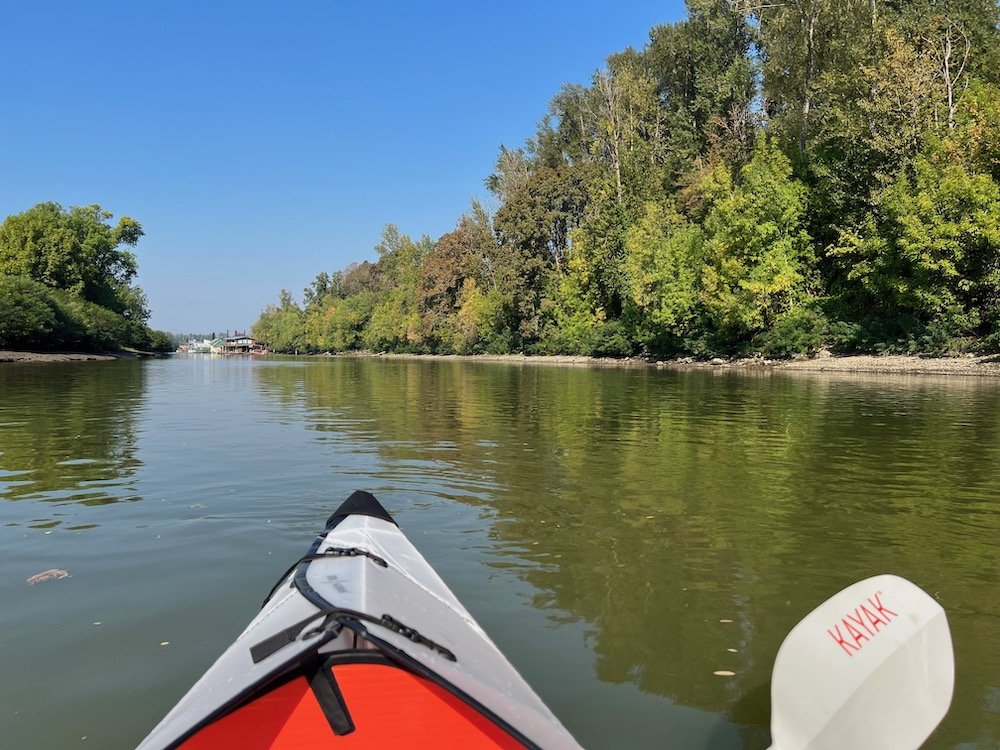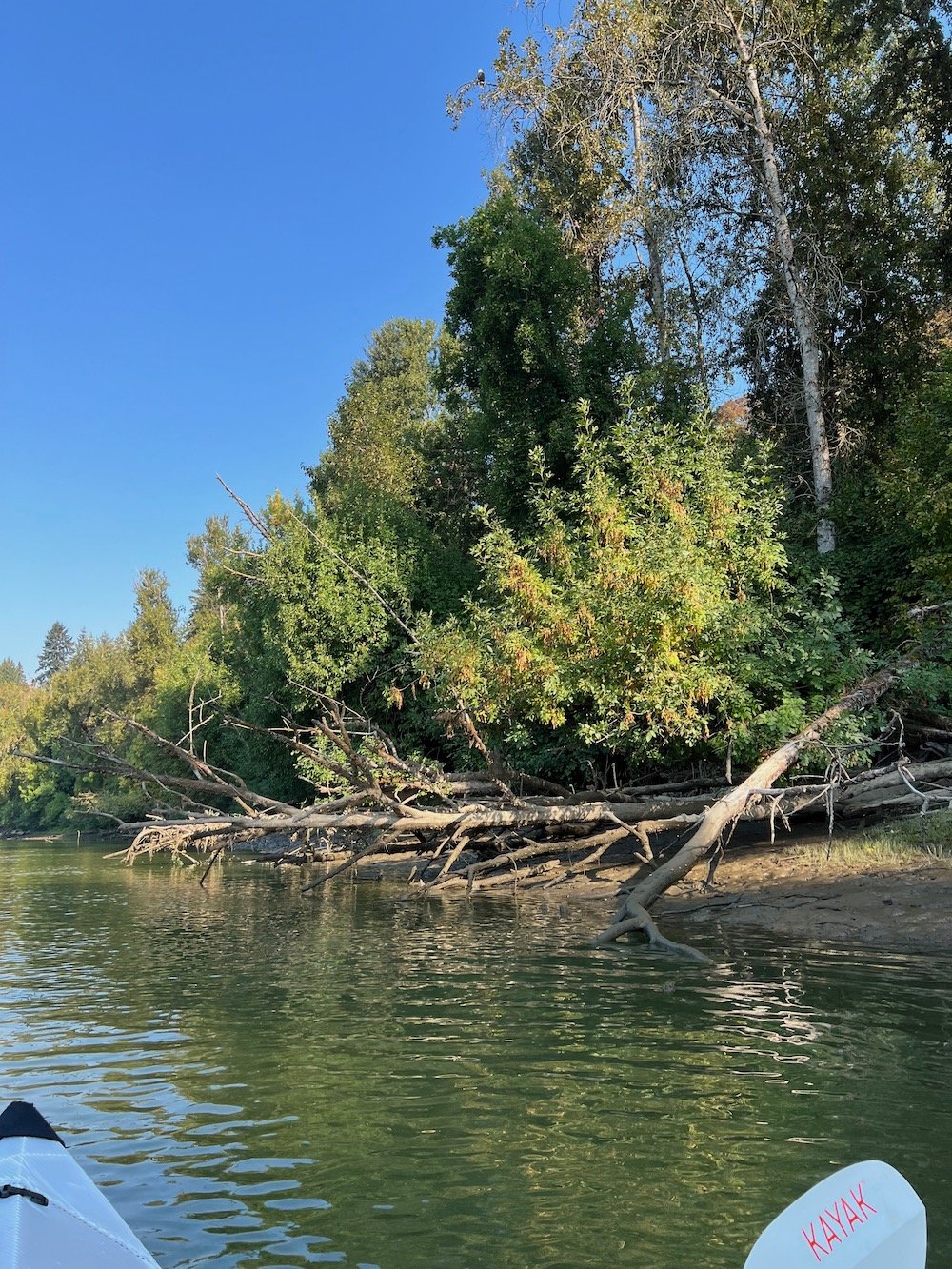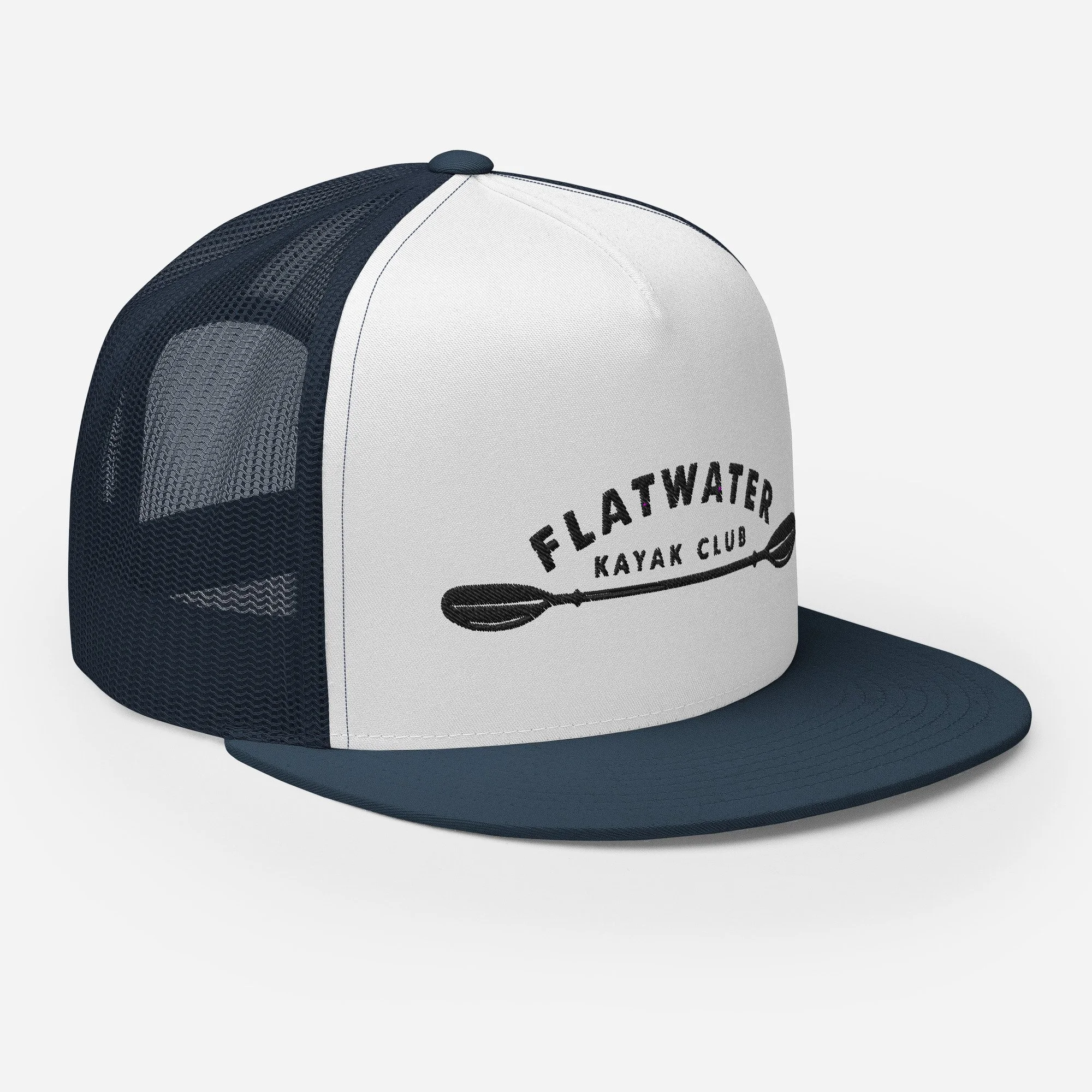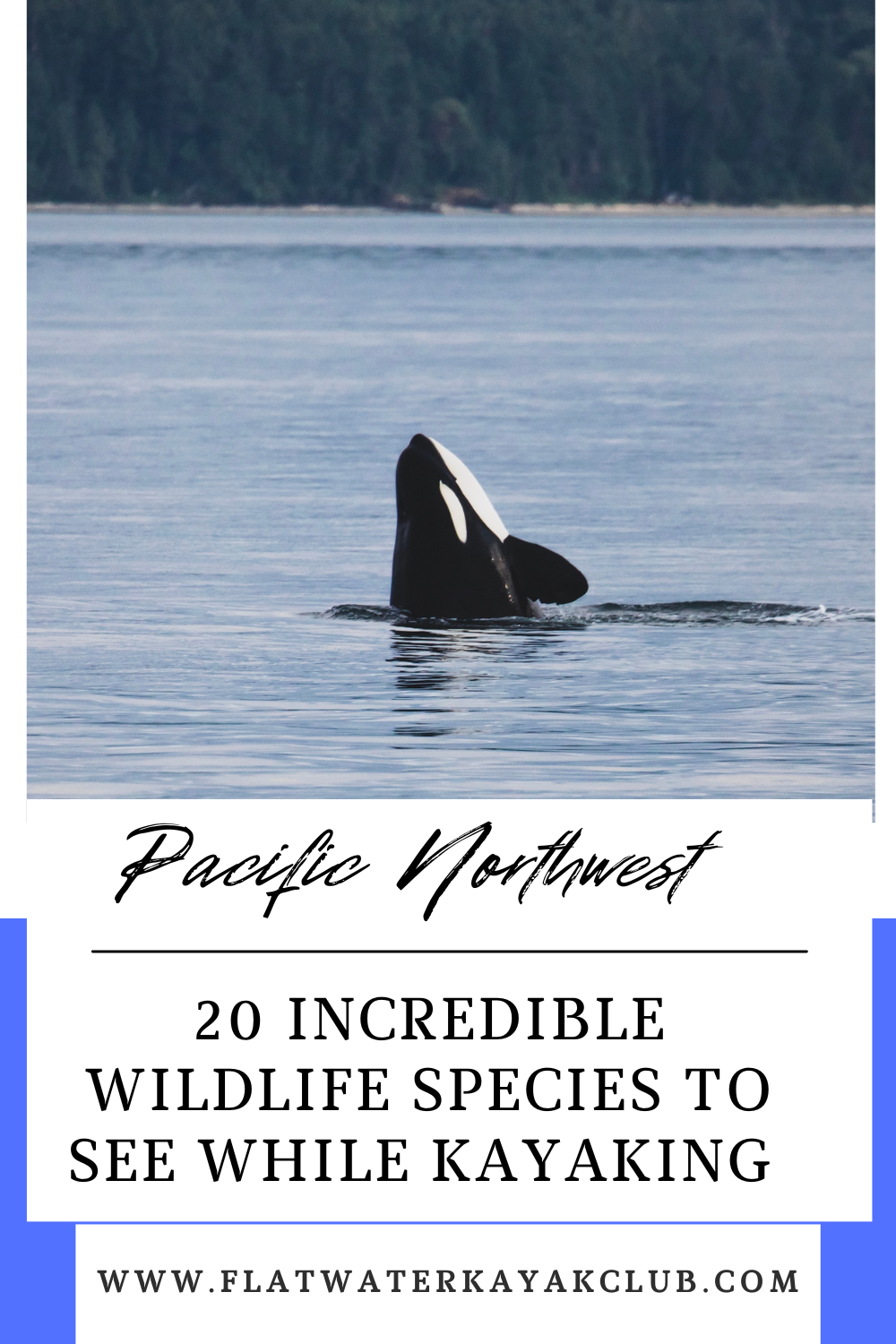5 best tips to see majestic bald eagles [kayak wildlife]
Last weekend, while flatwater kayaking in Washington state, we saw not one but two bald eagles. Read on to discover a great place in the Pacific Northwest to explore by kayak and learn 5 tips for increasing your chances of observing our incredible national symbols during your paddling adventure…
Bald eagles are the national symbol of the United States. To increase chances of observing one safely in the wild, follow 5 tips: 1) Explore their natural outdoor range, 2) Understand their habitats, 3) Search tall trees, 4) Look for a nest, and 5) Know bald eagle ID markers.
This website may contain affiliate links meaning if you purchase through my link, I’ll receive a small commission at no cost to you.
1.Kayak in the natural range of bald eagles
Bald eagles are native to the Pacific Northwest, so if you’re paddling around one of our favorite Flatwater Kayak Club routes, you already have chance in your favor (aren’t we lucky?). But the full natural range of these iconic birds includes most of Canada, Alaska, all contiguous United States, and northern Mexico.
And we really are lucky: at one point, not long ago, bald eagles were in danger of extinction throughout their range. Habitat destruction and illegal hunting was rampant, and their food source was contaminated by the chemical DDT. For 30 years, bald eagles were an endangered species.
Recovery of wild populations in the United States are a true success story in our country, thanks to a combined effort of conservation legislation measures, including the Migratory Bird Treaty Act and ban of DDT. In 2007, bald eagles were removed from the federal endangered species list.
“The Bald Eagle has been the national emblem of the United States since 1782 and a spiritual symbol for native people for far longer than that. ”
Do bald eagles migrate?
According to the Center for Biological Diversity, if bald eagles have plentiful food and water, they will often occupy a territory year-round. However, many eagles will migrate south or to the coasts in the winter in search of food.
Check out this super cool bald eagle migration map from The Cornell Lab with breeding, nonbreeding, and year-round ranges. Much of the Pacific Northwest territory falls under nonbreeding and year-round bald eagle territories.
2. Understand bald eagle habitats
Once you’ve identified the suitable bald eagle range for your kayaking experience, you need to know where to paddle for the best chances of spotting these beautiful, white-headed birds in the wild.
Bald eagles can typically be observed near large bodies of open water, where there’s an abundant food supply and tall, old-growth trees for nesting.
Bald eagles like exploring coastal areas, where the sea offers plentiful meals, and other large bodies of water like lakes, rivers, and mountainous open areas.
“Bald eagles can live a long time, with a longevity record of 28 years in the wild and 36 years in captivity.”
Where we spotted wild bald eagles from our kayak
Last weekend while kayaking at Ridgefield National Wildlife Refuge, we saw two bald eagles, each on a separate stretch of the amazing Lake River, on a beautiful day. (We actually heard from another kayaker that there was a third up in the trees, but didn’t see it).
Pro tip - if you want to paddle the same route we did, you can bring your own kayak to the Ridgefield Kayak Launch point, or rent a single or double kayak from this on-river Alder Creek location. I had my Oru Inlet kayak with me that day (like many of my adventures) and you can read up on all my Oru posts here at Flatwater Kayak Club.
I also recently saw over at least 10 bald eagles – juvenile and adults – during a two-day paddle and camp trip on the Willamette River in Oregon!
Did you know? Rather than actually doing the work of hunting, bald eagles are clever (or lazy, you decide) and target the prey that other animals have already caught or killed.
So while you might not see a bald eagle swooping down to the water to catch a fish, you could see it harass another creature, like an osprey, who has caught prey with its talons.
WATCH NOW: We spotted several bald eagles in the Ridgefield National Wildlife Refuge during the 2023 event.
Bald eagles in the state of Washington
Bald eagles are currently listed under “sensitive” species status in Washington state, which means that many of the long-time protective safeguards are no longer necessary due to their populations.
The U.S. Fish and Wildlife Service (USFWS) has the primary charge for protecting bald eagles under the provisions of the federal Bald and Golden Eagle Protection Act and the Migratory Bird Treaty Act. Current federal guidelines for activities that may affect bald eagles are posted on the USFWS website.
Bald eagles are sensitive to human activity, so always keep species protection in mind when you’re out kayaking.
If you see a bald eagle in the wild, enjoy observing the beautiful large birds from a wide distance that won’t disturb it. Don’t ever attempt to retrieve a feather or remove an eagle nest or feed it a snack.
You can learn more tips for enjoying bald eagles safely, compassionately, and compliantly in nature – while protecting this beautiful large bird species - at the Washington Department of Fish & Wildlife website.
WATCH NOW: See iconic bald eagles from a kayak in Washington State
3. Search the tall trees
Bald eagles love giant, open structure trees where they can enjoy excellent visibility of their surroundings and easy flight access. These large birds typically prefer old-growth, mature trees, such as conifers and hardwood trees where they can perch, roost, and nest to their heart’s content.
When you’re out kayaking in the Pacific Northwest, keep watch in the branches of tall trees, not necessarily the trees that are the closest to the water or a specific tree species.
We’ve found on many occasions while out in nature here that bald eagles like to observe from the tall, barren, dead trees, where they have vast, open views.
Last weekend, the observed bald eagles in Ridgefield National Wildlife Refuge were in two different trees, at different stretches of river. One was a little more hidden beneath some leaves and foliage, while the other was in wide, open view on a barren branch.
4. Look for a bald eagle nest
While you’re studying at the tall trees from your kayak, keep in mind that bald eagles may be in or near one of their nests.
And these aren’t just any old bird nests, these are some of the largest of all bird nests in the world, being built to 5 or 6 feet in diameter and 2 to 4 feet tall, according to the U.S. National Park Service, and can be flat, conical, or cylindrical in shape.
On a recent guided kayaking tour to Ballard Locks, just north of Seattle, Washington, we observed a gigantic bald eagle nest from our kayaks on a cloudy September day…
They take months to build, so they’re quite the impressive sight, if you happen to see one for the first time or twentieth.
And if you’re trying to guess at the sex of the bird, know that both bald eagle males and females bring materials to the nests and weaving and building.
You might not be able to see the materials from your boat - unless you have eagle eyes yourself - but some of these could be lichen, fine woody materials, feathers, and greenery springs.
5. Recognize the tell-tale identification markers for bald eagles
As the national symbol of the United States, bald eagles have an iconic appearance that will truly make you catch your breath if you’re lucky enough to observe one in the wild.
Bald eagles are a very large predatory bird species, with the females being larger in size. The plumage (feathers) of bald eagles are identical for adult males and females, with an even brown-colored body and a white head and tail.
The feet, irises, and beak of bald eagles are bright yellow in color. Their legs do not have feathers, and their feet have large, powerful, sharp talons.
Bald eagles are typically solitary creatures, but they’ve been known to congregate at communal roosts and feeding sites, particularly in winter months. In our case at the Ridgefield National Wildlife Refuge in Ridgefield, Washington, the two observed bald eagles were about a mile apart on the same stretch of Lake River.
Bonus tip: Download the Merlin app by Cornell, and you can also identify wild birds by sound. Ever heard what a bald eagle sounds like? It might surprise you!
Heading out kayaking? Report your wildlife observations with other citizen scientists
Did you know that Washington State welcomes wildlife observation information? Your reports help keep common wildlife common, and identify the presence of animals that are rarely seen in the wild and/or hard to document.
Help inform your fellow citizen scientists and researchers in your kayaking area by filling out a Washington State wildlife observation form here.
Important note from the state: In the event of an immediate public safety issue, wildlife violation, or an injured or dangerous animal, please call the WDFW Enforcement office at 360-902-2936 or email enforcement-web@dfw.wa.gov, or call 911.
More great kayak routes for birdwatching in the Pacific Northwest
If you love kayaking and birdwatching, there are countless opportunities to observe great blue herons, osprey, eagles, ducks, swans, and more in Washington, Oregon, and Idaho. Live near Portland, Oregon?
We recommend taking your kayak out to Scappoose Bay (you can rent a single or double kayak there from Next Adventure), exploring around the Willamette Narrows (REI offers a guided tour, which we highly enjoyed, if that experience interests you), and kayaking around Hog Island (where you can also rent a kayak from this on-river Alder Creak location).
The Pacific Northwest is an incredible place for wildlife lovers to explore. From iconic lakes to breathtaking rivers and coastal paddles, there’s something for every flatwater kayaker to enjoy. Discover 20 beautiful wildlife species that non-motorized kayakers can spot on their next paddle (and important legal and ethical code of conduct rules to follow), including black-tailed deer, orcas, and more, and the animals commonly spotted in the Pacific Northwest.
Flatwater Kayak Club merch is finally here!
Show your love of flatwater kayaking with your new favorite trucker hat, recycled t-shirt, eco-tote & more.
Check our merch shop for full product line - with new items added monthly!
We’ve found that kayaking brings us greater joy, clarity, strength, and community.
What will you find out there?

















